General Burnside's carbine: the first with a metal cartridge
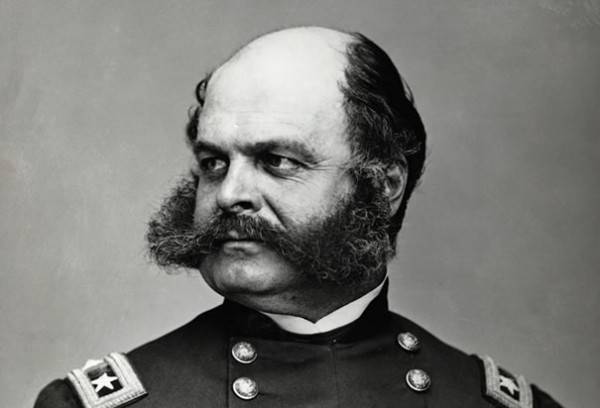
"You shoot like a soldier," Kamal said, "show me how you drive."
R. Kipling. Ballad of West and East
Military affairs at the turn of the eras. Perhaps, not so often war spurs the development of society so rapidly as it was, for example, during the American Civil War in 1861-1865. It began with one weapons, but ended, in fact, already with another, and this at a time when the inertia of thinking was extremely powerful, downright crushing impenetrable. But the need compelled, and time rushed forward with unprecedented speed. This concerned, first of all, small arms, the most massive weapon of war.
In one of the past articles, the Hall rifle, the first breech-loading rifle in the United States, aroused great interest among VO readers. Today we will also talk about another example of small arms that appeared there at the turn of the century: Burnside's first breech-loading cartridge carbine.
Well, we will have to start by mentioning that the Hall carbine, which has served faithfully to the American cavalry for a long time, is outdated both morally and physically, and it was decided to replace it with something new. And on this "something" the US government was ready to pay 90 thousand dollars, the money at that time is very considerable. And, of course, many wanted to get them.
As for Ambrose Burnside, after graduating from West Point in 1847, he had already managed to fight both in Mexico and with the Indians, he knew well what problems cavalrymen have with weapons. And knowing, he tried to create a cavalry carbine, devoid of the shortcomings known to him. Moreover, he left the service already in 1853. Apparently, her hardships seemed too "painful" to the young officer.
Again, we recall that this was the time of the muzzle-loaded capsule weapon. The standard weapon of the American infantry in those years was precisely the musket of the 1855 model (modernized in 1861), which, of course, was in no way suitable for the rider, even when converted into a carbine.


Did Burnside have predecessors on whose designs he could look and take something from them? Yes, there were, in particular, Christian Sharps, who patented his rifle back in 1848; moreover, from 1850 it began to be produced by various American factories. It was also loaded from the breech with a traditional paper cartridge with a Minier bullet, it had primer ignition, but there was one interesting detail in its design: just a sharp edge at the vertically sliding bolt on the side adjacent to the breech. However, it was this find that made his weapon truly popular. Having manually inserted the cartridge into the barrel chamber, the shooter had only to return the shutter control lever, successfully combined with the trigger guard, to its original place. The bolt went up, cut off the bottom of the paper sleeve with a sharp edge, so now all that was left was to put the capsule on the hose and ... shoot. No more "knead the cartridge", "bite the cartridge", "push the cartridge into the barrel" was no longer required!
True, the paper sleeves were not always well removed, and besides, they were soaked in water, which Burnside did not like. Therefore, he simultaneously invented both a cartridge and a carbine, and as a result, it was his sample that became the first model of small arms in US history for a metal cartridge.
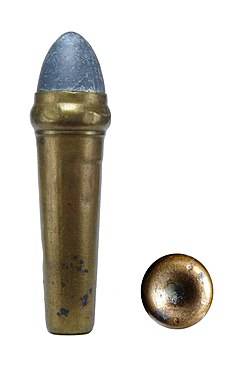
This cartridge was Burnside's most significant innovation. It had a conical shape, was made of brass and was inserted into the bolt chamber from the side facing the barrel, when the bolt by the action of the lever located under the receiver was lifted up by the cartridge chamber. Unlike modern cartridges, it had no ignition source, and this was its main drawback. Each cartridge had a small hole in the bottom, covered with wax. Therefore, for firing from the outside of the bolt, a standard fire tube was provided, on which a standard shock capsule was worn. This cartridge was innovative and effective, but was already obsolete by the end of the war, so no serious effort was made to continue the production of Burnside carbines after the end of hostilities.
So, in 1856, Burnside designed his carbine, and in 1857 he already won the competition at West Point, being the best among 17 other models of carbine presented to him. The government immediately ordered 200 carbines, but this was too few, and Burnside, no longer hoping for success, sold his share of the patents and company to a certain Charles Jackson in 1858. The situation changed with the outbreak of the civil war, during which more than 55 carbines were ordered for the Union cavalrymen in five gradually improving versions.
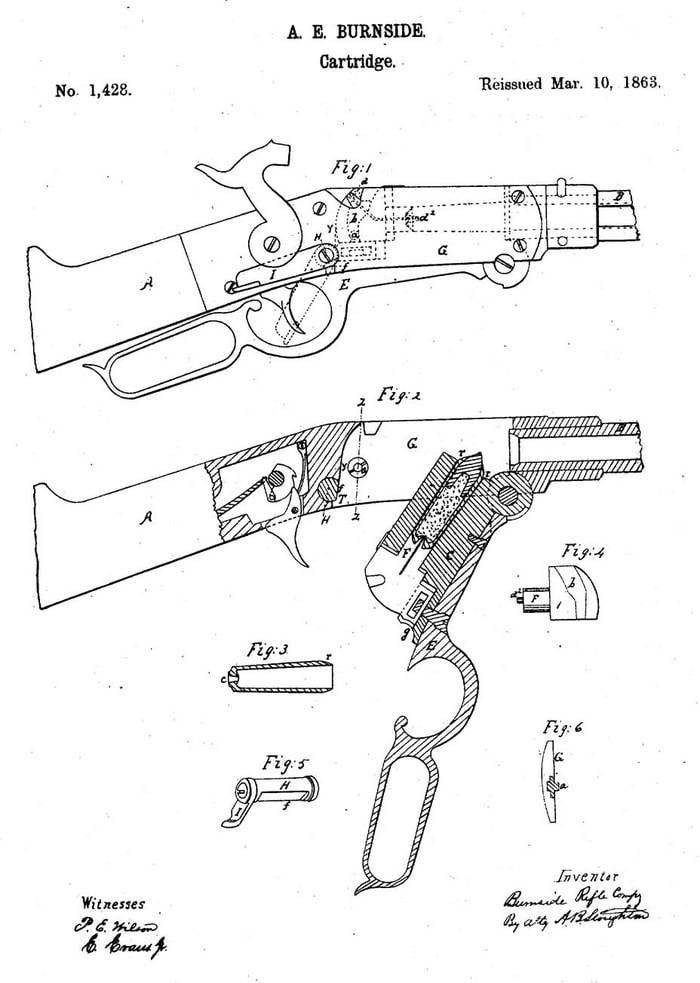
Burnside carbines were initially quite expensive to manufacture. So, in 1861, the cost of one carbine was $ 35,75. But gradually, as the technology was developed, it decreased. So in 1864, one carbine cost only $ 19.
Since the Burnside carbine was produced in the thousands, this made it the third most popular rifle in the Civil War; only Sharps and Spencer carbines were somewhat better known. And let's just say these carbines were spoken of as more modern and successful. But on the other hand, the "Burnside" fought longer, and besides, they were used in all theaters of war. And there were so many of them that many carbines were captured as trophies by the Confederates. In this case, the main thing that the shooters who used these carbines complained about was that his sleeve sometimes got stuck in the breech after a shot.
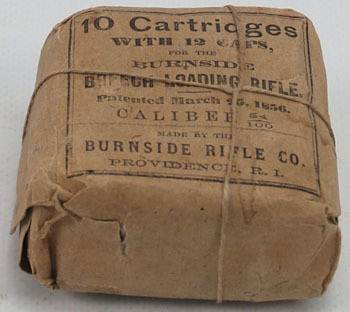
Based on the data on applications for ammunition, it was calculated that in the period 1863-1864. Burnside carbines were in service with 43 Union cavalry regiments. In addition, in the same period of time, they were armed with cavalrymen of 7 cavalry regiments of the Confederate army, albeit not entirely, but at least partially ... Interestingly, for all its shortcomings, it was produced not only in the USA, but also in England until 1870, and in total, about 100000 of these carbines were produced!
There are five known examples of this carbine. But by the end of the Civil War, their production ceased, and the Burnside Rifle Company switched to the production of Spencer carbines.

Its distinctive feature is that it had a magazine that could hold seven metal rimfire cartridges, which were fed into the breech of the bolt by a spring in the magazine. The store was loaded through the rifle butt. When the trigger guard was lowered, the breech was also lowered, and the spent cartridge case was thrown away. When the trigger guard returned to its original position, the bolt moved up, grabbed a new cartridge and inserted it into the breech. To speed up the loading process, the Blakeslee box was developed, which contained several loaded magazines that could be quickly inserted into the stock. In total, the federal government purchased more than 95 Spencer carbines during the war.
Another contemporary of the Burnside carbine and its enemy rival was the .52 caliber carbine constructed by Jerome H. Tarpley of Greensboro, North Carolina, who was granted a patent for it by the Confederate government in February 1863. It was produced by J.I.F. Garrett's company in Greensboro from 1863 to 1864. But Tarpley carbines were rare. Only a few hundred of them were made.

The carbine had a unique design dictated by military necessity. The receiver was of untreated brass. The barrel was blued and the hammer tempered. The shutter was thrown back to the left. The main drawback of the carbine was that it did not have any seal to prevent gas leakage between the bolt and the barrel when fired. The gases produced by the combustion of black powder are highly erosive. Therefore, with each shot, the gap between the bolt and the barrel increased, which, of course, did not add to its reliability. But it used conventional paper ammunition. Although the carbine was produced primarily for the army, it was also sold commercially. It is the only Confederate firearm sold to the general public during the war. Tarpley had an attractive appearance, but it should only be used by people with strong nerves!
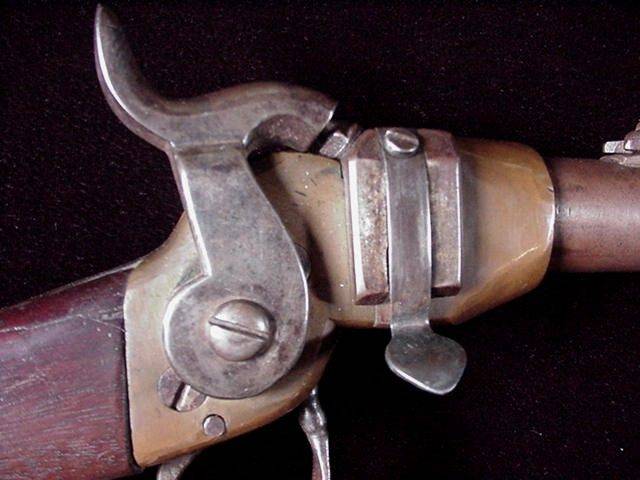
Gilbert Smith, who lived in Buttermilk Falls, New York, was a physician. But, like many enthusiasts of the time, he showed a great interest in small arms. In the 50s of the XIX century, he filed a number of applications for breech-loading small arms, and, like Burnside, he began by inventing a new cartridge with a rubber sheath.
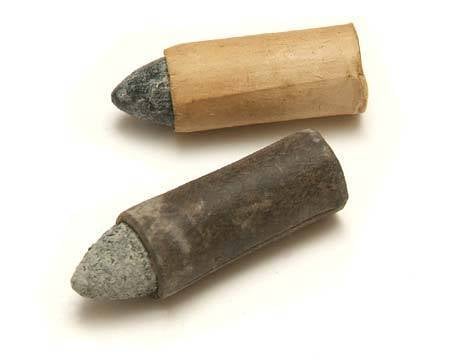
Well, his research ended with the fact that in 1857 he designed a carbine of a very elegant, if I may say so, design. It weighed 3,4 kg, had a total length of 1000 mm and a barrel length of 550 mm. Caliber .50 Smith. The carbine belonged to the type of "breakage", that is, shotguns with barrels that fold back for loading. But the barrel lock, shaped like a steel spring plate with a hole in the back, was right above the barrel! In front of the trigger was a "pusher", pressing on which raised the plate, the barrel was lowered, and its charging chamber opened. Simple and technological. However, at first the carbine also cost 35 dollars (1859), which is why it was not accepted for service. But the war changed everything. In 1861, the price fell to $ 32,5, and the government began to purchase Smith carbines. They were armed with 11 cavalry regiments of the northerners, and a total of 30062 units were released! The most important problem was the cartridge. Yes, it did not get wet, but it was not always convenient to remove it from the chamber, and besides, it caused misfires at the carbine.
James Greene patented the unusual design of his breech-loading carbine back in 1854 and suggested that it be manufactured by the Massachusetts Arms Company of Chicopee Falls. He managed to sell 300 carbines to the US military. However, field trials in 1857 showed that they were too awkward for riders to use. Nevertheless, the British military placed a larger order on them, apparently intending to equip Cape Town's mounted riflemen with them.
British carbines had 18-inch barrels (American - 22-inch), but were otherwise identical to American guns. Green used a locking system in which the barrel rotates 90 degrees and is fixed by two large lugs in the locking grooves on the frame of the weapon. In this case, the barrel was spring-loaded and rotated on a guide rod located under it. Well, in order to make it convenient to rotate it, it has a faceted section located behind the sight. The cartridge is paper or linen, and in the center of the bolt a conical needle with a channel inside was provided, piercing the base of the cartridge when the bolt is closed. This needle directs the flow of gases directly into the powder charge of the cartridge, which, of course, was a rational decision. Two triggers shouldn't be surprised. The first trigger actually released the barrel stopper.
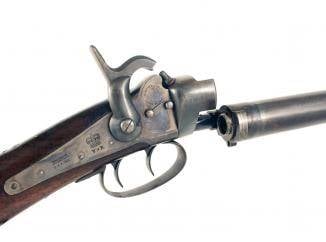
The British spent several years testing ammunition for Green's carbines, but they could not find a material that was comfortable enough to pierce it with a bolt needle, but at the same time durable for use in the field. They were eventually destroyed or sold and never used in combat.
As for Ambrose Burnside himself, he did climb the ranks and became a general, most likely precisely because his carbine was very well known. President Lincoln repeatedly demanded that he take command of the Union Army of the Potomac. And Burnside constantly refused him and honestly declared that he could not command such a large army. When in the end he was persuaded to do so, his command led to defeat at the Battle of Fredericksburg. Burnside's officers then began to complain about his incompetence to the White House and the War Department. And it all ended with the fact that he was put on trial, which accused him of a number of failures, but then he was acquitted, although he lost his general rank. But he went down in history with his carbine and sideburns!

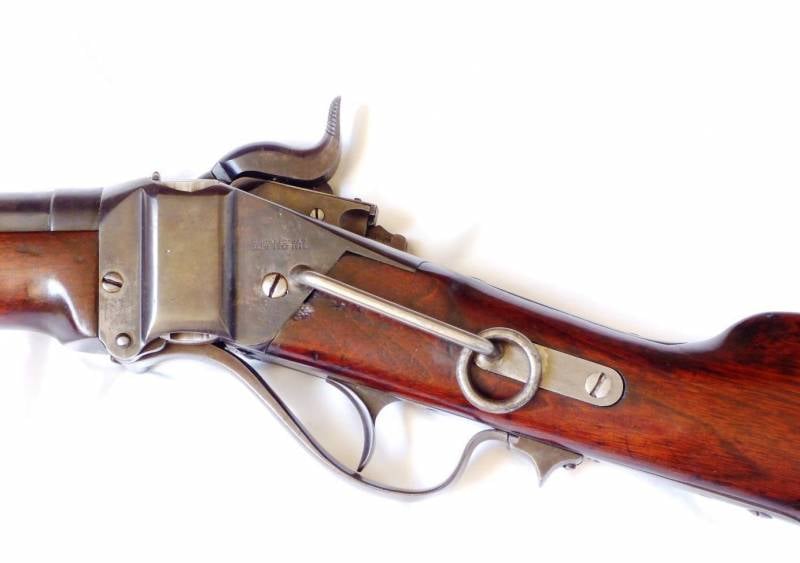
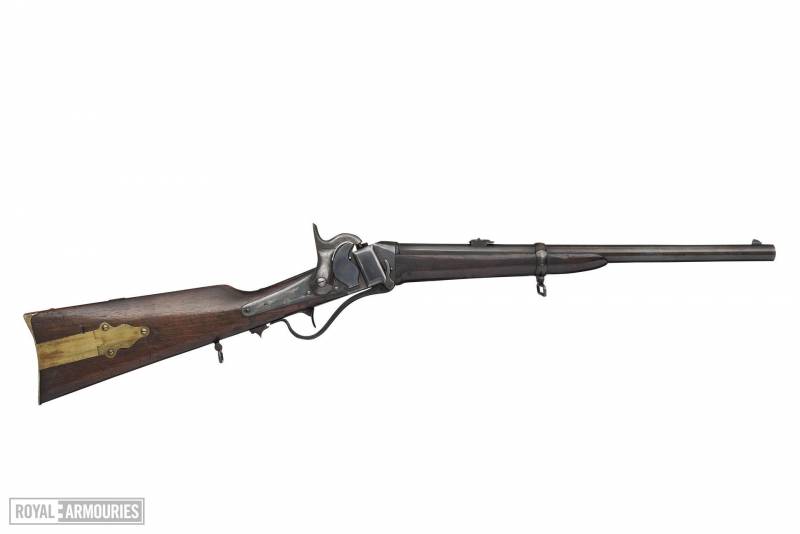
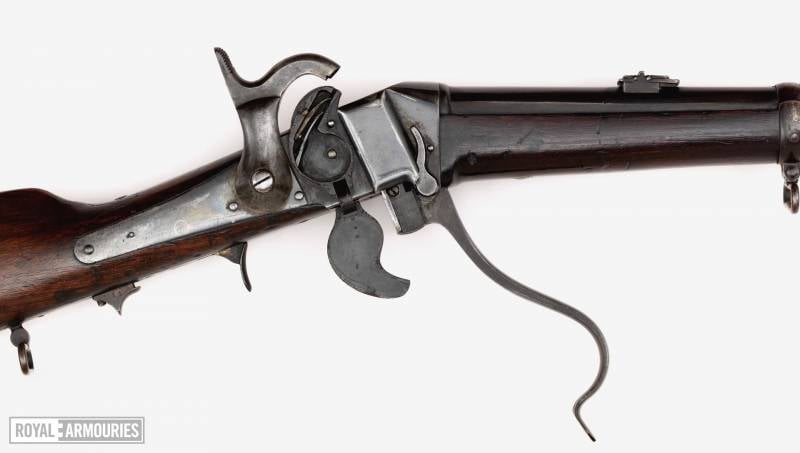
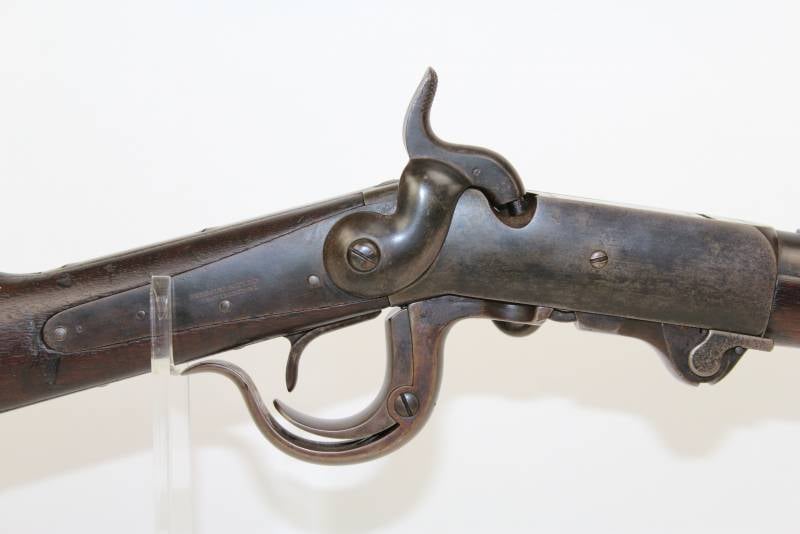
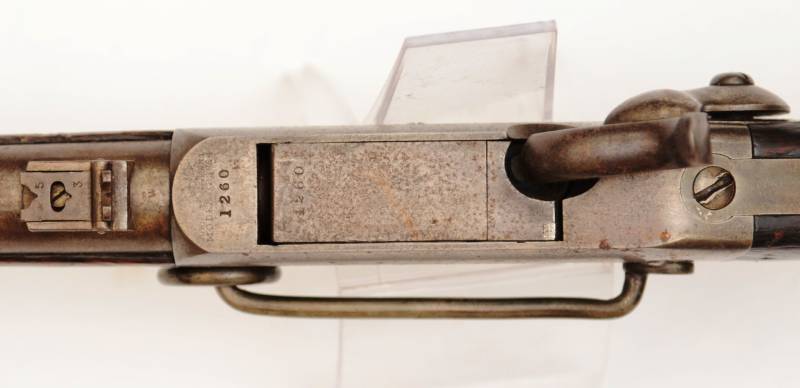
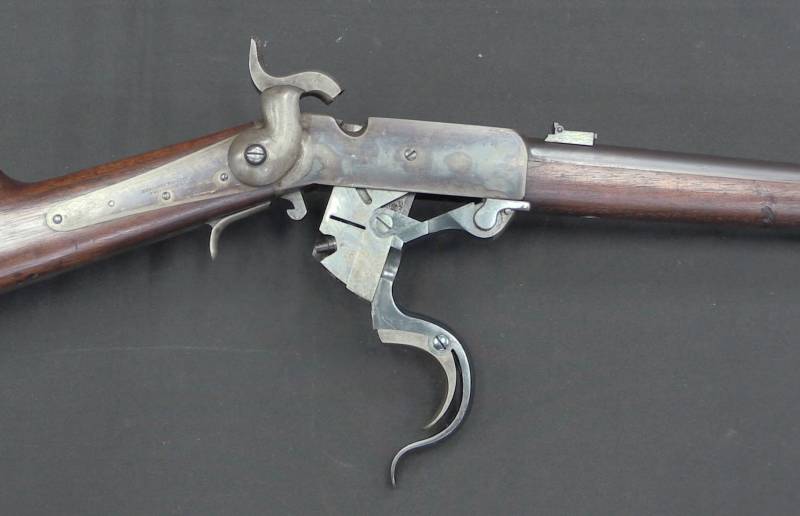

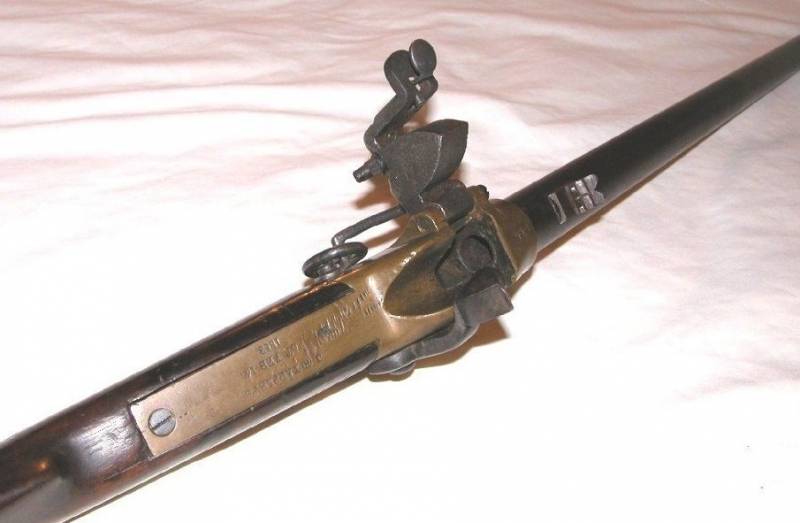

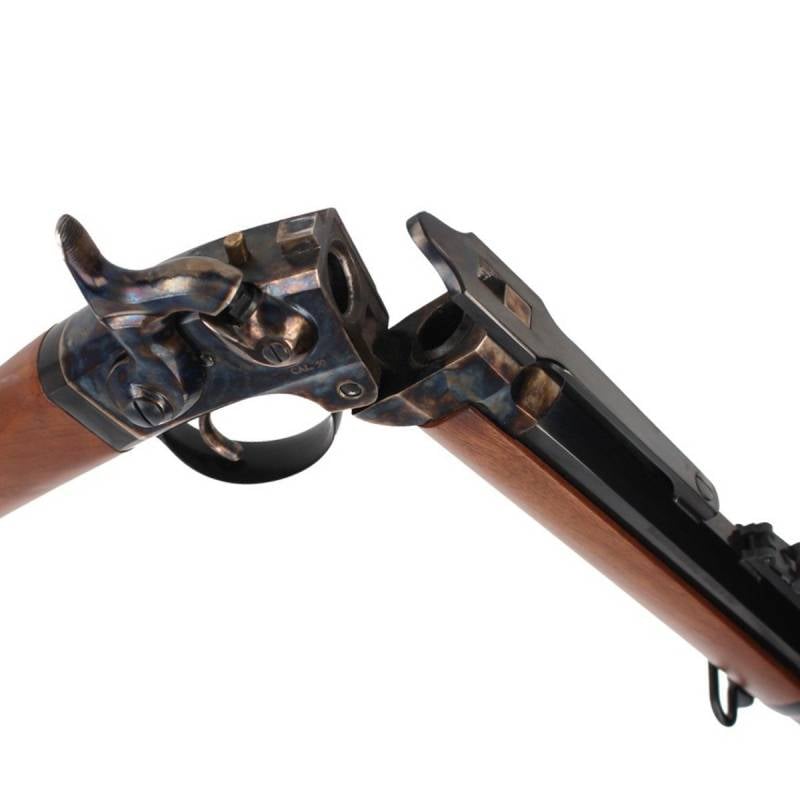

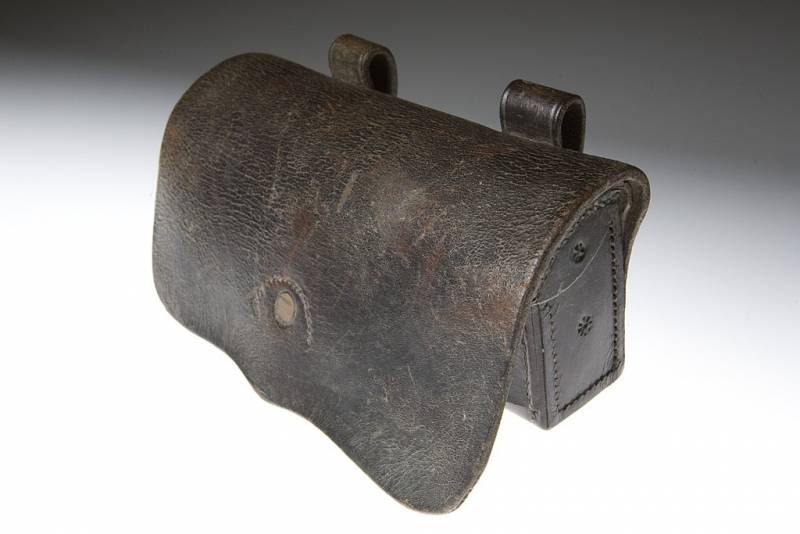
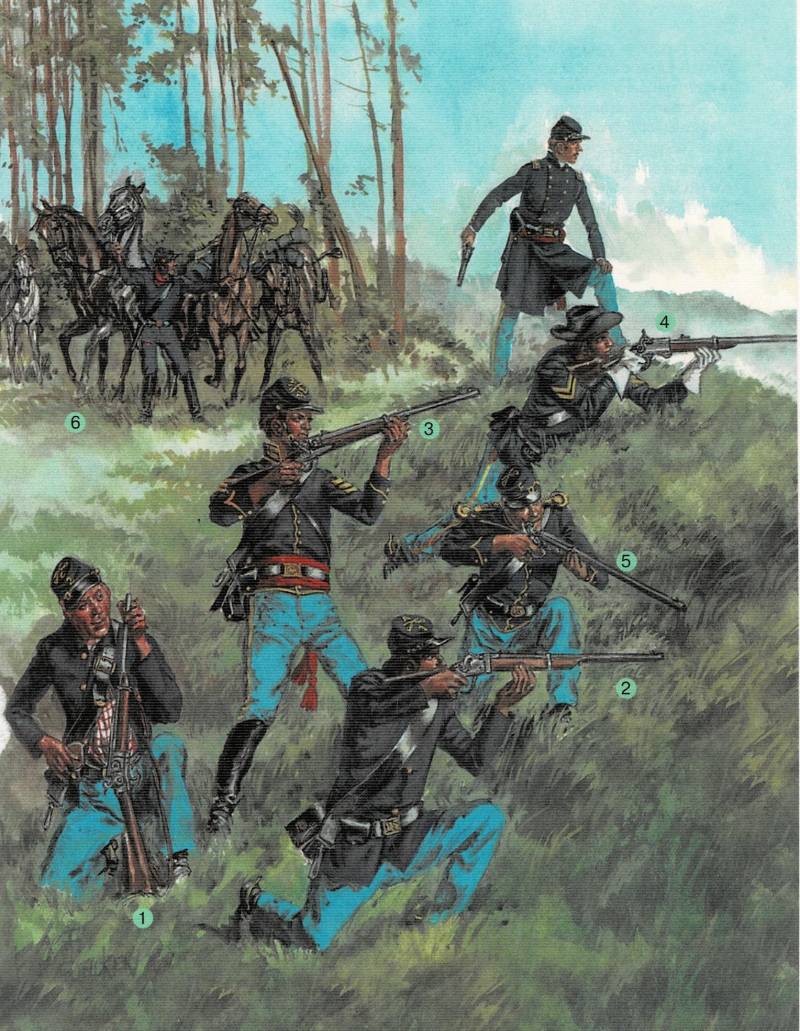
Information